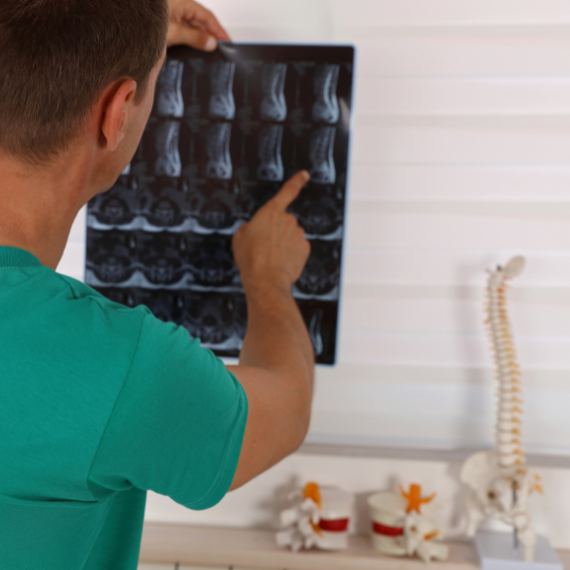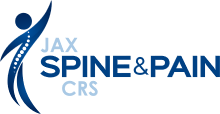Disc Herniation
Disc Herniation
Disc herniation, or slipped disc, is a common cause of back pain. Most people remember the exact moment of injury because it resulted in a sharp, shooting pain radiating into an arm or a leg. In severe cases, herniated discs can pinch on a nerve root, creating numbness, tingling, or weakness in the extremity.
People frequently use the following terms interchangeably to describe a herniated disc: slipped, bulging, ruptured, or protruding disc. This condition is often found in men between the ages of 30 and 50, but can occur in any population and age group.
What Is A Disc Herniation?
Your spine has bones called vertebrae, which are stacked one on top of the other. The largest part of the bone is called the vertebral body and between the vertebral bodies are tissues called intervertebral discs. These discs are thickened rings of cartilage that act as shock-absorbing cushions.
The outside of the disc comprises the annulus fibrosis, which surrounds and holds the nucleus pulposus in the center. When the annulus fibrosis is damaged or tears, the nucleus pulposus bulges or herniates outside of the disc. This displaced tissue then compresses on nerve roots or the spinal cord.
There are three types of disc herniations:
- Protrusion – a contained herniation, or bulging disc. The nucleus pulposus pushes into the annulus fibrosis and causes the outer rings of the annulus fibrosis tissue to protrude and swell outwards.
- Extrusion – a non-contained herniation, or ruptured disc. The nucleus pulposus leaks through the annulus fibrosis.
- Fragment – a sequestered herniation. The nucleus pulposus breaks through the annulus fibrosis and separates completely from the central nucleus. This tissue migrates and traps itself within the spinal canal, causing spinal cord or spinal nerve root compression.
Disc herniations can happen in different parts of the spine:
- Lumbar disc herniation is the most common type of disc herniation. You have a 95% chance of herniation occurring at the levels of L4-L5 or L5-S1.
- Cervical disc herniations are also common but happen less frequently compared to the lumbar spine. The injury will likely occur at the level of C6-7.
- Thoracic disc herniation has the lowest rate of occurrence as this part of the spine is less mobile than the lumbar and cervical spine.
When sciatica is left untreated and symptoms do not resolve on their own, you may be left with worsening pain and long-term complications.
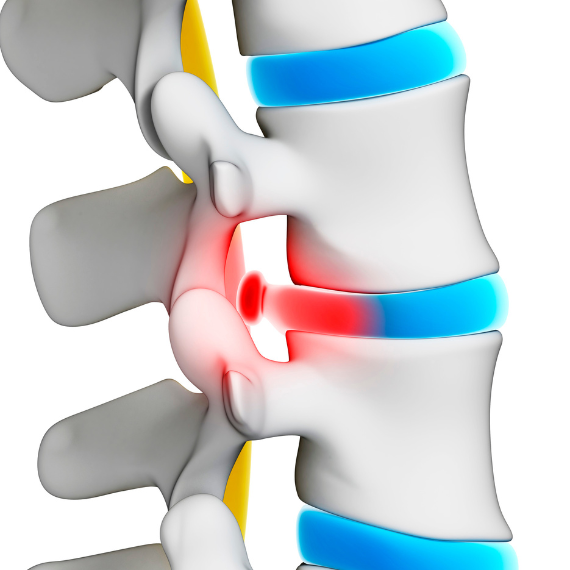
Symptoms Of A Disc Herniation
With a herniated disc, pain is usually felt where the herniation is located on one or both sides of the spine due to pressure and inflammation by the ruptured disc. When a nerve is compressed or irritated, pain can radiate from your back into your butt, thigh, hip, and foot.
When herniation occurs in your neck, you can feel symptoms radiate into your shoulder, elbow, wrist, or fingers. Pain can range from dull and achy, burning and tingling, or sharp and shooting.
If motor function is lost, or you have difficulty moving your arms or legs, you should seek medical attention immediately.
After the initial injury, sometimes symptoms resolve within a few weeks. When swelling and irritation on the nerve decreases, pressure on the nerve is relieved and therefore the pain subsides.
However, if symptoms are severe, not improving, or you are experiencing rapid neurological changes, you must seek help to relieve pressure immediately to avoid permanent nerve damage. This permanent damage leads to chronic pain and disability.
But not everyone experiences pain with a herniated disc. Some people have issues with their discs and do not even know it. While herniated discs are usually very painful, many people have them and notice no pain symptoms.

Causes Of A Disc Herniation
The most common cause of disc herniation is due to the degenerative process. As you age, your nucleus pulposus loses its ability to hold water. The disc no longer acts as a cushion. Instead, it is like a hammer beating down on your disc and spine. Without its ability to hold water, the disc loses its flexibility and increases stress through the spine, which weakens the discs and increases its likelihood of tearing.
Injury and trauma are also common causes of disc herniations and include:
- Car accidents
- Sports injuries
- Lifting objects incorrectly
- Lifting objects that are too heavy
- Twisting and lifting at the same time
- Bending over
- Reaching across your body
In addition, certain connective tissue disorders and congenital disorders make people more prone to disc herniation.
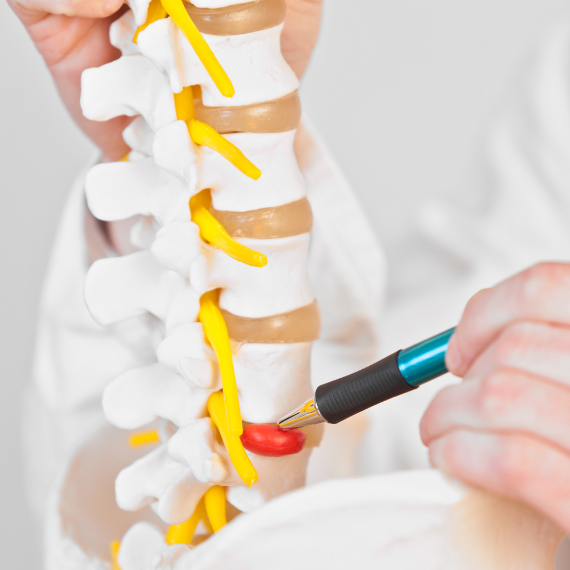
What Causes Recurrent Disc Herniation?
Once you herniate a disc, there is a greater chance of it happening again. Even after surgical interventions, recurrent herniation has reported rates of up to 25%.
Risk factors for recurrent disc herniation include:
- Smoking
- Obesity
- Diabetes mellitus
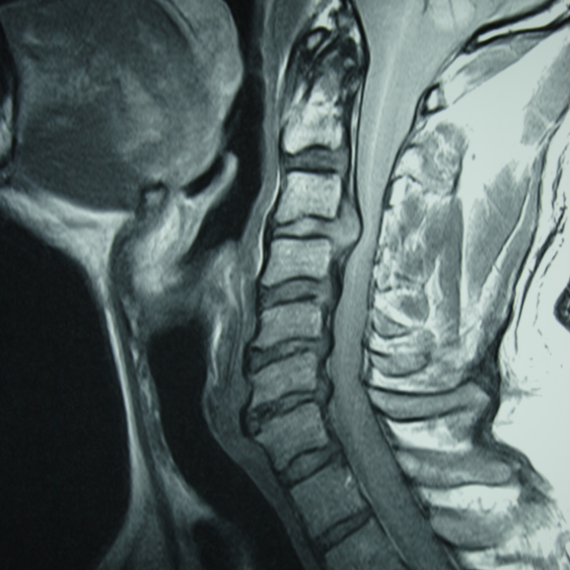
Treatment Options For A Disc Herniation
There are many reasons why you can have back pain and disc herniation is just one of them. Dr. Fierro will complete a comprehensive evaluation and differential diagnosis. If a disc herniation is identified, Dr. Fierro will determine the best conservative treatments for you that can be completed in his office.
Acute pain caused by disc herniations can be managed with nonsurgical treatments. And many cases can be resolved within a few weeks. If left untreated, you run the risk of complications that can lead to chronic low back pain and lasting nerve damage.
Disc herniations can be managed with stretching, mobility exercises, strength training, and core strengthening.
Dr. Fierro offers hands-on treatments that include:
- Chiropractic care
- Active Release Techniques (ART)
- Massage therapy
- Acupuncture
- Nonsurgical spinal decompression therapy
- Dry needling
- Laser therapy
- Shockwave therapy
Patient education is also key to a successful treatment outcome. You will learn to:
- Avoid provocative activities – stay away from activities that increase your pain.
- Practice good posture – keep constant movement and avoid staying in a single position for too long, especially if you sit or stand awkwardly.
- Use proper body mechanics – move with care while transitioning between sitting, standing, bending over, lifting objects, or carrying items.
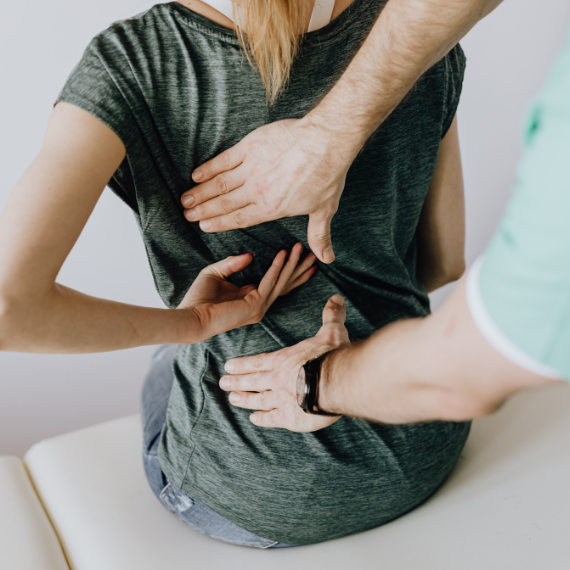
Our Process For Treating Disc Herniations
During your initial visit, Dr. Fierro will review what caused your condition and when it started. With this information, he will determine if your condition is chronic or acute and can create a customized treatment plan to help you reach your goals quickly.
If you have diagnostic tests with you, you can review them with Dr. Fierro. If you don’t, don’t worry! He can order them to rule out any underlying conditions.
Next, Dr. Fierro will complete a series of special tests that include:
- Reflexes
- Sensation
- Strength
- Range of motion
- Muscle pain
- Joint pain
- Swelling
After your initial evaluation, we will schedule a follow-up appointment to review your results and develop a care plan. You will be presented with several options for treatment and together with Dr. Fierro will determine the best course of action.
If you’re suffering from pain due to a disc herniation, we can help. Contact us today to schedule an appointment.
